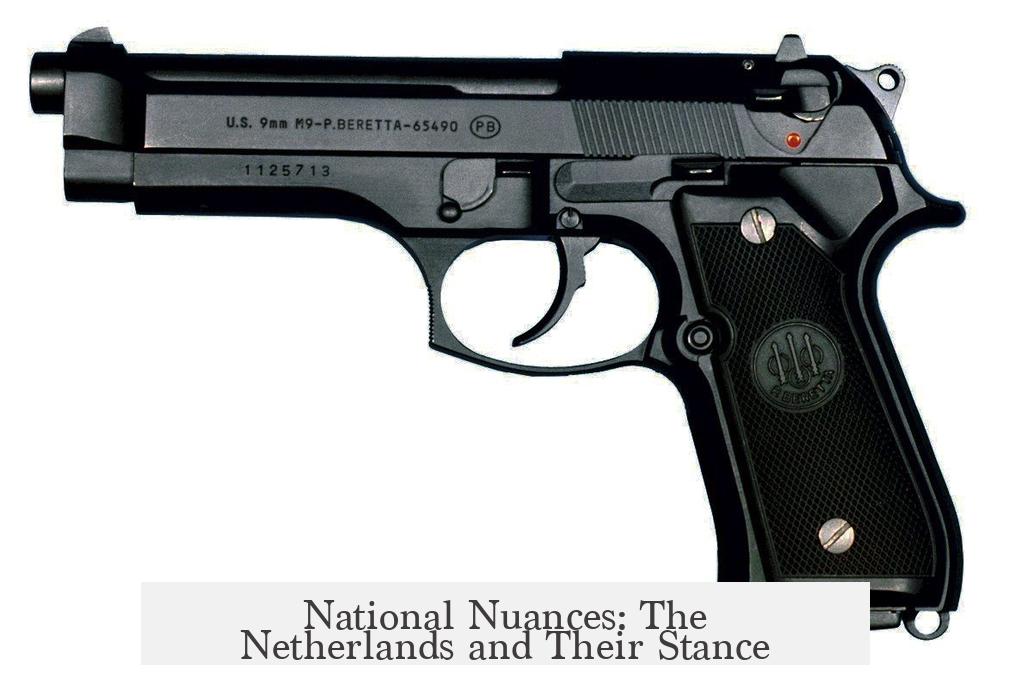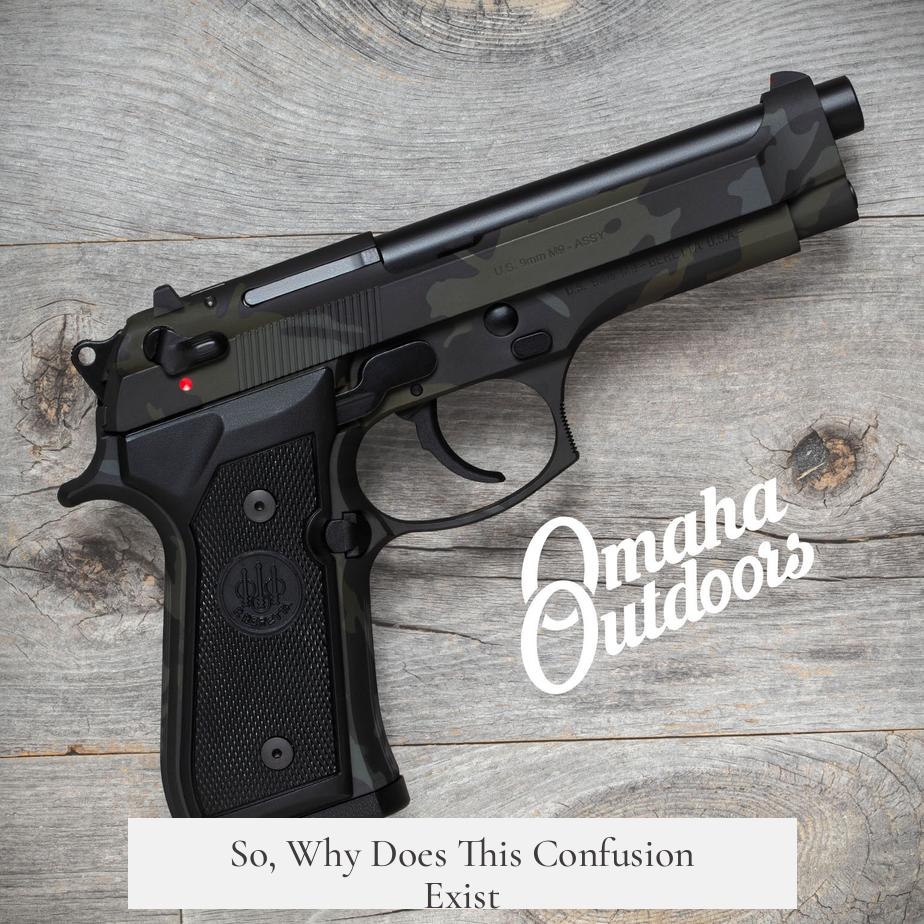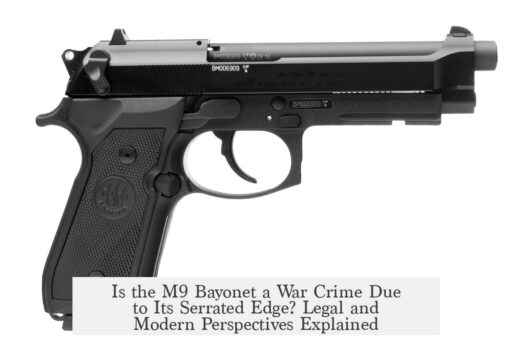The M9 bayonet is not considered a war crime simply because it has a serrated edge. International law does not explicitly prohibit serrated blades, including those on bayonets. The claim that serrated bayonets constitute a war crime lacks clear legal grounding under existing international conventions.
The 1899 and 1907 Hague Regulations forbid weapons causing “unnecessary suffering” or “superfluous injury.” Article 23(e) states it is forbidden to use arms or materials calculated to cause such harm. However, these rules do not specifically mention serrated bayonets or edges.
The misconception likely arises from broader prohibitions on weapons causing indiscriminate or excessive harm. These laws primarily target chemical, biological weapons, or arms designed solely to inflict torture or prolonged agony. Serrated bayonets serve utility functions like cutting rope or wood, not only combat.
National military policies vary. For example, the Netherlands prohibits serrated or saw-toothed bayonets in its army. This national rule reflects concern over unnecessary suffering but is not an international standard. Modifications adding barbs or serrations purely to increase injury severity might fall under prohibitions, but standard M9 bayonets as issued are not modified illegally.
Experts widely agree the inclusion of serrations on the M9 bayonet is to enhance practical utility, not to cause excessive injury. The blade’s design assists soldiers in field tasks, making the serrated portion a functional tool rather than a weapon meant for torture or superfluous harm.
- International laws forbid weapons causing unnecessary suffering but do not specifically ban serrated bayonets.
- The Hague Regulations focus on preventing weapons intended purely to cause excessive harm.
- The M9 bayonet’s serrated edge mainly serves utility purposes.
- Only some countries, like the Netherlands, have specific bans on serrated bayonets.
- Modifications to increase injury severity could be illegal, but standard M9 bayonets comply with international norms.
Isn’t the M9 Bayonet a War Crime Because It Is Serrated?

Short answer: No, the M9 bayonet’s serrated edge is not considered a war crime under international law. But this topic stirs up a lot of debate and misconceptions. Let’s dig deeper to clear the fog surrounding serrated blades and their legality in warfare.
Many folks hear “serrated blade” and instantly imagine a terrifying, gnarly weapon designed purely to cause gruesome wounds. This perception often leads to the claim that serrated bayonets like the M9 violate the laws of war. However, the reality is more nuanced and grounded in international law.
The Legal Backbone: International Conventions and Interpretations
International law does not expressly ban serrated weapons. Instead, it prohibits weapons that cause unnecessary suffering or superfluous injury. This broad standard comes from the Hague Regulations of 1899 and its 1907 revision.
Specifically, Article 23, Subparagraph e of the Hague Regulations states that it is forbidden “to employ arms, projectiles, or material calculated to cause unnecessary suffering.” The exact wording is deliberately vague, allowing interpretation but emphasizing the principle that weaponry should not cause more harm than necessary.
During World War I, objections to serrated blades often referred to this clause. The idea was that jagged edges might inflict more painful, “unnecessary” injuries compared to a smooth blade. But there was never a global treaty explicitly singling out serrated bayonets as unlawful.
National Nuances: The Netherlands and Their Stance

Here’s where it gets interesting. Most countries don’t have specific bans on serrated bayonets. The U.S. military still equips troops with M9 bayonets featuring partial serrations, and this is widely accepted internationally.
However, the Netherlands is an exception. Dutch military regulations forbid the use of serrated or saw-toothed bayonets. While their ban isn’t about the bayonet per se, it’s tied to rules prohibiting modifications that increase unnecessary suffering, such as adding a saw edge or barbs to combat knives or bayonets.
The takeaway? The Netherlands favors a stricter standard, but this is a national policy rather than an international norm.
Modern Views: Serrated Tools, Not Torture Devices
The myth that serrated edges are automatically cruel ignores how the M9 bayonet is designed and used today. The M9 bayonet, introduced in the 1980s, blends two purposes: it’s a weapon but also a utility tool. The serrations aid cutting through rope, wood, or other materials, not just flesh.
Experts now generally agree that the serrated section of the M9 is not “calculated to cause unnecessary suffering.” It enhances the bayonet’s usefulness in survival and field conditions rather than amplifying its lethality or causing needless pain.
Think about your kitchen knife with a serrated edge—it slices bread better without causing extra harm. That practical design rationale extends into military gear too. Serrations are about efficiency, not cruelty.
So, Why Does This Confusion Exist?

War always attracts heated debates about ethics and morality, and weapons like the serrated bayonet become symbolic lightning rods. The image of a serrated blade can evoke strong emotional reactions, leading to assumptions disconnected from legal definitions or military practicality.
What’s more, the language of international conventions is broad. Terms like “unnecessary suffering” are open to interpretation and require context. Without direct mention of serrations, claims of war crimes hinge on subjective readings, making it difficult to apply internationally.
What Can Be Learned From This?
- Use facts, not feelings: Just because something looks brutal doesn’t make it illegal under international law.
- Look for explicit prohibitions: International treaties don’t ban serrated bayonets; only some countries nationally restrict modifications.
- Understand the tool’s function: The M9 bayonet serves practical purposes beyond combat, like survival tasks.
Examples in Practice

In decades of military operations, the M9 bayonet has been standard U.S. gear. No credible war crimes accusations have stemmed from its serrated edge alone. Soldiers use it as a tool to cut materials, and yes, it can be used in close combat—but so can any bayonet.
Meanwhile, the Netherlands’ prohibition reflects their policy choice, not international consensus. This confirms the key point that restrictions on serration are not standard international law but rather variations in national rules.
Closing Thoughts: Bits of Serration, Not Bits of War Crimes
If you wonder, “Isn’t the M9 bayonet a war crime because it is serrated?” the answer lies clearly in international legal frameworks, practical use, and national policies.
Claiming serrated edges as a war crime misses important legal distinctions and context. The M9’s serrations are practical features, not tools of unlawful harm designed to torture or maim beyond necessity.
So next time this question pops up, think about the laws behind the weapons, not just their appearance. Often, the hottest controversies simmer from misunderstandings—not from the cold facts of war law.




